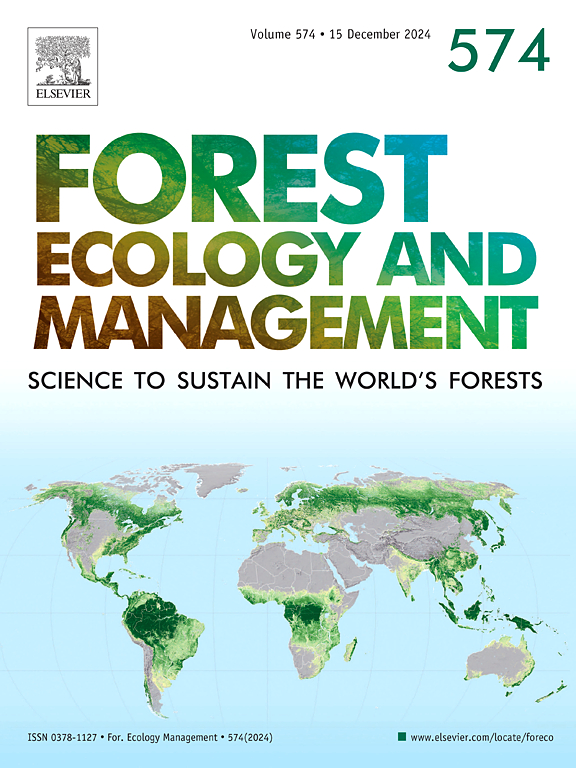Tree vitality predicts plant-pathogenic fungal communities in beech forest canopies
IF 3.7
2区 农林科学
Q1 FORESTRY
引用次数: 0
Abstract
Forest canopies host diverse fungal communities that are crucial for tree vitality—defined as the physiological and structural traits influencing growth and resilience—and, consequently, for ecosystem functions. The canopy mycobiome has been shown to be closely associated with its tree hosts, especially in the case of pathogenic taxa. To better understand and predict how the canopy mycobiome will respond to changing environmental conditions, we used tree vitality-related variables to predict patterns in the beech canopy fungal plant-pathogens in two temperate forests— Bavarian Forest National Park, Germany and the Veluwe forest area, the Netherlands. Canopy water content, chlorophyll content, and crown diameter emerged as robust predictors of the canopy fungal plant-pathogen communities. We showed that these tree vitality-related variables predicted the unweighted relative abundance of plant-pathogenic fungi in the total fungal communities and the diversity of the fungal plant pathogen subgroup, but not the weighted relative abundance of plant-pathogenic fungi in the total fungal communities. Our model offers a powerful tool for monitoring this previously neglected biome in temperate beech forests in Europe.
求助全文
约1分钟内获得全文
求助全文
来源期刊

Forest Ecology and Management
农林科学-林学
CiteScore
7.50
自引率
10.80%
发文量
665
审稿时长
39 days
期刊介绍:
Forest Ecology and Management publishes scientific articles linking forest ecology with forest management, focusing on the application of biological, ecological and social knowledge to the management and conservation of plantations and natural forests. The scope of the journal includes all forest ecosystems of the world.
A peer-review process ensures the quality and international interest of the manuscripts accepted for publication. The journal encourages communication between scientists in disparate fields who share a common interest in ecology and forest management, bridging the gap between research workers and forest managers.
We encourage submission of papers that will have the strongest interest and value to the Journal''s international readership. Some key features of papers with strong interest include:
1. Clear connections between the ecology and management of forests;
2. Novel ideas or approaches to important challenges in forest ecology and management;
3. Studies that address a population of interest beyond the scale of single research sites, Three key points in the design of forest experiments, Forest Ecology and Management 255 (2008) 2022-2023);
4. Review Articles on timely, important topics. Authors are welcome to contact one of the editors to discuss the suitability of a potential review manuscript.
The Journal encourages proposals for special issues examining important areas of forest ecology and management. Potential guest editors should contact any of the Editors to begin discussions about topics, potential papers, and other details.
 求助内容:
求助内容: 应助结果提醒方式:
应助结果提醒方式:


